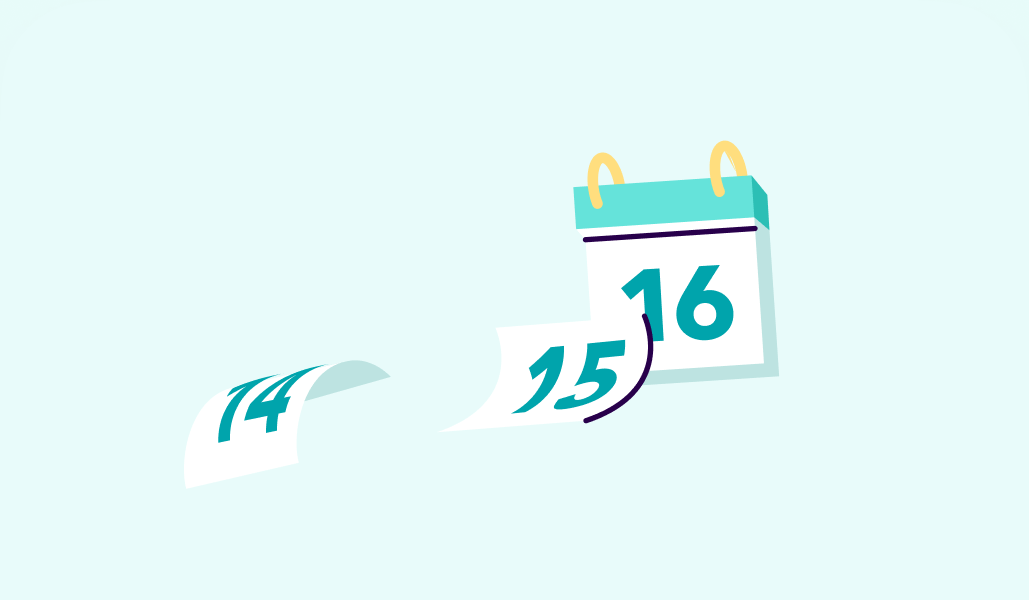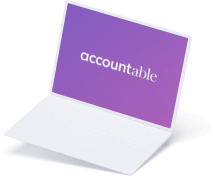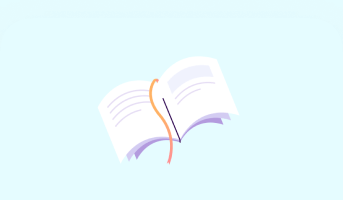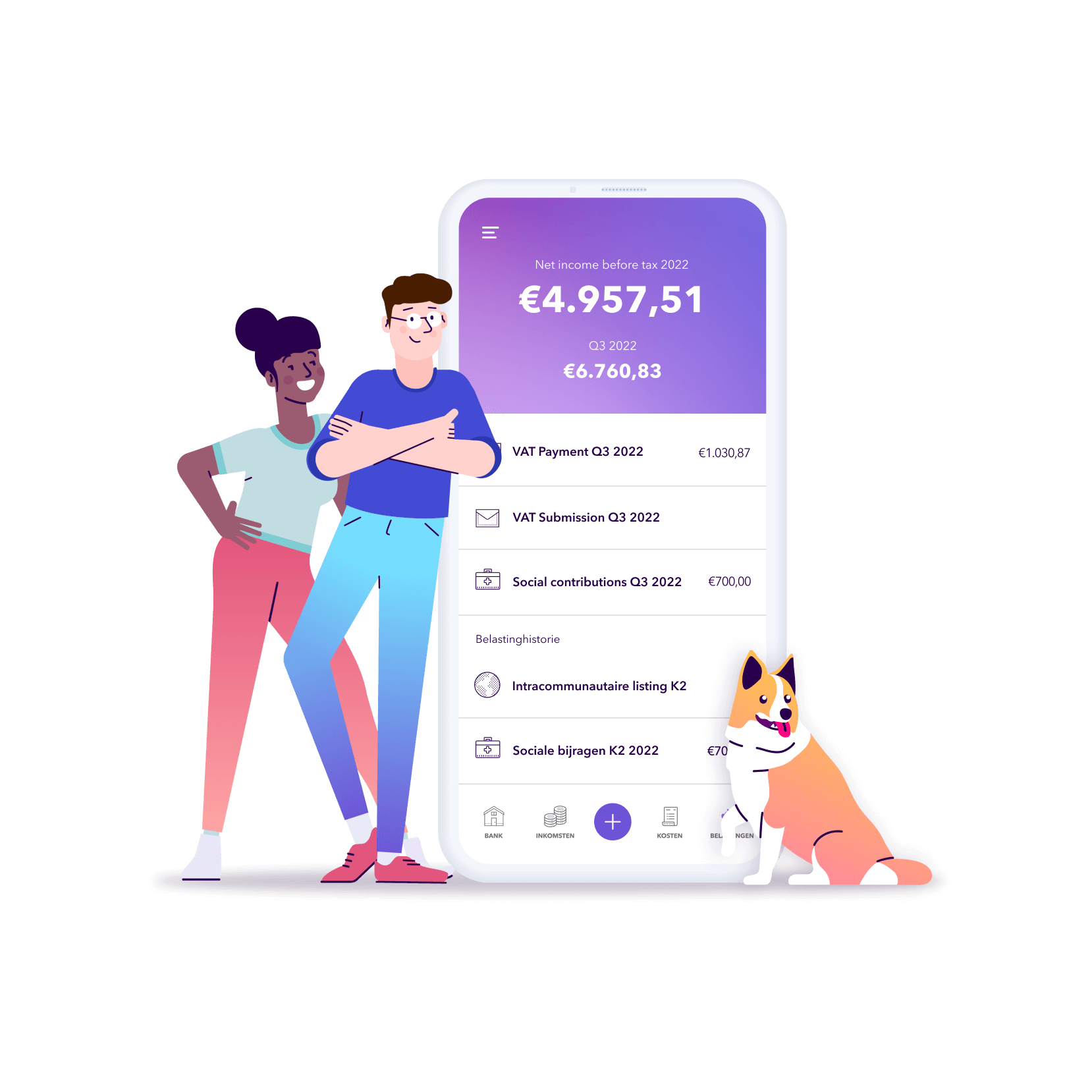
Unpaid invoices? This is how to deal with them!
Read in 7 minutes
You’ve worked hard, or maybe you delivered a service to someone or sold something to a client. The next step, of course, would be to create an invoice according to all the correct rules of accounting.
Can you close this project now and move on to the next one?
Almost! Your work might be finished, but your customer still has to pay the invoice.
During your career as self-employed, you will, however, probably encounter some unwilling customers.
This is not a reason to quit though. Your work, just like the work of everyone else, deserves to get paid.
Getting paid for your hard work is about being able to survive your status as self-employed; according to the UCM in Namur (social security provider), one freelancer out of every four freelancers goes bankrupt because of unpaid invoices!
From our experience, it is always a difficult thing to try to claim your money. That’s why we prepared a mini-guide below to help you and make sure your invoices are getting paid!
When should you start to respond?
As quickly as possible: if you’re using Accountable then we already informed you that the due date of your invoice has passed. You did not receive the payment yet on your professional bank account. You have allowed ten days, a maximum of two weeks to expire since the due date of your invoice and nothing has happened. Now it is time to contact your customer again.
How to start contacting your client?
The continuity of your business, of your activity as self-employed depends on your clients paying you on time. How you manage your invoices, and their payments determine your reputation on the market as well.
Before you start the process of trying to recover your unpaid invoices, you should ask yourself a few questions: what is your relationship with the customer that did not pay their invoice (yet)? Is your customer satisfied with the work you supplied? How important is your client in the grander scheme of things, like comparing to your other clients? Do you want to build a long-term relationship with them?
Whatever you do next, keep the answers to these questions in the back of your mind.
Send the first reminder
Sending a letter at first might sound a bit intimidating directly to your customer might sound a bit intimidating. The best way to approach someone and to avoid any confusion in writing is always first to try to get them on the phone. Of course, if you want to have some form of written proof, you can always send an email as well. Whichever option of the two you choose, make it very easy for the receiver. Tell them who you are and what invoice you’re referring to.
At this moment it is still a bit early in the process to be too tough; after all, it might just be an accident of your client. He might have just forgotten to pay. Maybe they received the product but found there was something wrong. Maybe your invoice was missing some information. Whatever it is, encourage your client in case there are any remarks to contact you.
Sending a simple reminder like this shows that you are always following up with your client and that you’re willing to build a long-term relationship. Make the most of this opportunity!
TIP: Don’t indicate that this is, in fact, the first reminder. Doing so will give the impression that you’re okay with sending more of them and extending the period of you not getting paid.
Aren’t you getting any reaction? Time to send a second reminder
Didn’t you get any reaction on your first reminder? Now it’s time to send a second reminder. The best way to do this is by using an old school letter or email.
This time you can be a bit more strict and remind your customer on your terms and conditions mentioned on your invoice, or even better, the terms and conditions signed upfront before doing any work with you. You can also remind your customer that he risks facing default interests.
Still nothing? Time to get serious
If after these two sets of reminders you still don’t receive anything it is time to send a third reminder by registered letter. From this official notice of default, you can request the fine for defaulting that you stipulated in your terms and conditions in case of a default.
Take some professional help
Are you still getting nothing? It’s time to bring in the big guns and get some professional help. When you’re hiring a professional, there will be a higher probability that your debtor will change their mind and start paying…
- You need to contact a professional collection agency: these commercial companies are specialized in collecting the debts of companies and individuals. They do need to involve the court to that aim. As a result, you can maintain your professional relationship with your customer. Most of the time, their business model is based on the “no cure, no pay” principle. And when they are successful, they take a percentage of the amount collected. Are they not succeeding in getting your money? Then you also don’t have to pay for anything. The only risk in doing something like this is the fact that your customers probably know that these collection companies are not going to take them to court and not take their efforts seriously.
TIP: if your debtor is disputing your invoice, do not resort to a collection agency. In this case, only the court can help settle the dispute.
- You can also seek the assistance of a bailiff in the context of a procedure for amicable recovery or legal proceedings in court. In the case of an amicable recovery, the bailiff first sends a letter of formal notice to the debtor. The bailiff acts as a mediator to help collect the defaulted payment without having to go to court. Every bailiff is free to set their price for an amicable collection. In the case of a legal proceeding, the bailiff comes into play as well. The bailiff is the person who hands over the writ of summons to your client, the debtor. This prospect is sometimes already enough to frighten bad payers so that they pay their debt at that time. In case the court makes a decision, the bailiff can claim the amount owed from the debtor at home and if necessary, proceed to confiscation. Whenever there are legal proceedings, the bailiff is paid with a legally determined fee; you can find the latest rates here. (the PDF is in Dutch but the numbers are easily recognizable).
- Lawyer up! A lawyer will first issue a letter of formal notice for you or initiate a payment order procedure. Fees for these services can go as high as 250 euros, depending on the rates set by the cabinets in Belgium. If your client doesn’t respond to a letter with a letter heading from a lawyer’s office, the lawyer can institute legal proceedings. Or in a way that everyone understands it, he will sue your client. From the moment you take someone to court, you must keep into account all the extra costs involved, the registration costs per deed, costs of sending a subpoena, a duty levied for the entry on the hearings schedule, plea costs and costs of proceedings. The lawyer is the person who defends your interests in court. If the decision is to your advantage, you can then collect the default claim, your penalty clause, your interests on arrears and the legal costs that you first had to pay yourself back. The debtor, if convicted, has to pay the legal costs. On top of that are the costs of implementing the decision (for example confiscation) and 700 euros at the commercial court are also for the debtor… unless you can’t get your money back because your client is either insolvent or bankrupt. It might sound difficult and taking up a lot of your time, but if your invoice is above 1000 euros, you clearly stated your terms and conditions in advance, and your debtor is creditworthy is, it might be an interesting route to take.
Are you looking for a way to get more legal security without the need to go all the way to court? Maybe you should consider an extrajudicial recovery procedure! Following the knowledge that one-third of all invoices between companies were paid late, in July 2016 the Belgium legislation introduced this procedure. These late payments caused some serious liquidity problems after all.
If you want you can use this legislation if:
- the debtor is a company and not a natural person (this procedure can only be applied to b2b claims)
- it concerns a Belgian company or when the company is registered in the company database of another European member state
- your customer does not dispute the invoice
If you can meet these three conditions, you can start an extrajudicial recovery procedure. So what does this mean? You will start with the following process:
- The lawyer examines whether the claim is eligible for this procedure
If this is the case, you will move on to step two…
- The bailiff sends a formal notice to pay, with all the necessary supporting documents and a response form, to the debtor (your client). At this time the bailiff can also already do a check on the solvency of the debtor.
- Now it’s up to the debtor. Your client has one month at the latest to pay or ask for payment facilities or dispute the debt.
=> If the debtor pays, this means the end of the procedure
=> If the debtors dispute the debt, they can switch to a legal procedure holding a strong case
=> If the debtor does not respond, we move on to the next step
- If the debtor does not respond or does not respect the payment facilities he was granted, the bailiff draws up a report of non-dispute. This happens eight days after the end of the month that your client was granted to respond.
- This report of non-dispute is declared enforceable by a magistrate. Concretely this means that the bailiff can enforce the report. This entire process happens electronically so it can be quite fast.
The advantage of this new procedure is, that it is a lot less expensive the VBO (Verbond van Belgische Ondernemingen or Fédération des Entreprises de Belgique, FEB) compared the prices of a judicial and extrajudicial procedure based on the different invoice amounts here. As you can see it is fast and effective. Another big advantage is that you don’t have to go to court and therefore are less likely to jeopardize your commercial relationship.
A collection agency? A debt collector? A lawyer? Judicial or extrajudicial proceedings? It is up to you to determine how much time and money the recovery of your invoice is worth.
It is also up to you to choose whether you want to take your client to court and put your commercial relationship on the line. Make sure you have a good dose of patience when you set up this procedure: Collecting a claim can roughly take up to six months.
A golden rule: do not wait to resolve this file. The longer you wait, the less you want to get involved and… the less chance you have of seeing your money.
Did you find what you were looking for?
Happy to hear!
Stay in the know! Leave your email to get notified about updates and our latest tips for freelancers like you.
We’re sorry to hear that.
Can you specify why this article wasn’t helpful for you?
Thank you for your response. 💜
We value your feedback and will use it to optimise our content.










